Pickled shallots are a staple in my house. Ever since I was young I can remember always remember the joy of biting into a tart, sometime face puckering pickled onion. I now make pickled shallots, after a few years of experimentation, so I have a plentiful supply in the house for whenever the mood takes me.
I love working on a recipe and developing it over time, fractionally improving it over months and years and that is how I come to this version of a pickled shallot recipe. It started with onions and eventually transitioned to pickled shallots because I prefer the texture and they are much easier to find in the supermarket than pickling onions. Then can the pickling spice and vinegar, different spices and different vinegars to try and find the best version I could. This pickled shallot recipe is the result of all those previous attempts.
Table of Contents
Why Pickle Shallots & Not Onions?
I find this recipe works really well with shallots. They are around the same size of pickling onions at around 1 inch or so across, however, the texture of shallots tends to be a little more delicate. Occasionally you will get an onion that has a tougher outer layer and shallots don’t tend to have this problem. This is why I prefer to pickle shallots.
What Vinegar For Pickling Shallots?
Malt vinegar is probably personal preference. I have found my best result come from using traditional malt vinegar. Malt vinegar has a robust, powerful flavour that can compete with the prickly and fierce tartness of the shallots. Cider vinegar can go well but I don’t think the cider vinegar flavour comes through in the shallot as well as malt vinegar.
Along with the malt vinegar we will be bolstering the flavour with pickling spices and if you like heat a few chilli flakes. This will permeate the onions as they are stored for a month or more.
Acidity of the Vinegar Needs To Be At Least 5%
Of course, you can decide for yourself what vinegar is best to use but you do need to make sure the acidity is high enough to pickle the shallots.
When buying your vinegar make sure the acidity is at least 5%. Occasionally you will find pickling vinegar which will almost always be over 5% acidity. This is important as the pH of the pickled shallots is what keeps them from spoiling when sealed in the jar.
These pickled shallots are stored in sealed jars at ambient temperature not in the fridge so be sure to check the acidity of the vinegar you are using in this recipe.
A Small Amount Of Sugar
To provide some balance to the flavour of the already acidic shallots and the vinegar a bit of sugar is good. I have tried this recipe without sugar and the shallots tend to be to mouth puckering. The sugar brings balance and gives the finished flavour a little more body.
Preparing Shallots for Pickling
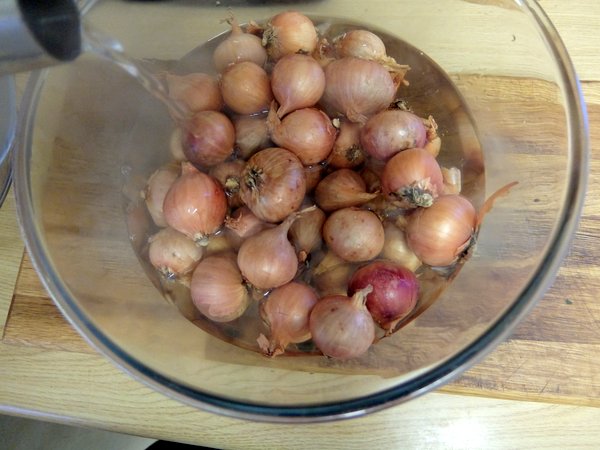
Shallots or onions take a little bit of preparation to get them ready for pickling. Peeling several kilos or pounds of shallots can be a bt tedious. Fortunately, a few simple tips can help speed the process up.
To begin, add all the shallots into a large bowl, big enough to fit all the shallots at once. Bring some water to a boil and pour it over the shallot so they are submerged. They tend to float but this isn’t a big issue. Allow the shallots to sit for a few minutes.
After a few minutes, drain the shallots. This soaking process will loosen up the skins and make peeling a lot easier.
Trim the bottoms and tops of the shallots and then slide them out of their skins. Hopefully this process will make peeling all the shallots a little less painful. It is not a fun job but well worth the effort.
Pickled Shallot Recipe
Pickled Shallots Ingredients – Make 2 – 3 Large Jars
1kg Peeled Whole Shallots (prepared as above)
750ml Pickling Malt Vinegar (5% acidity)
125g Sugar
2 tbsp Pickling Spice
2 Bay Leaves
1 tsp Chilli Flakes (optional)
Salt
Method
1. To begin take place the shallots in a large bowl. Make up a brine solution using 75 grams of salt per 1 litre of water and cover the shallot with the brine. Leave the shallots overnight, this step will draw liquid out of the onions, preserve their texture when they are pickling and enhance their flavour as well as stopping the vinegar being diluted with excess water.
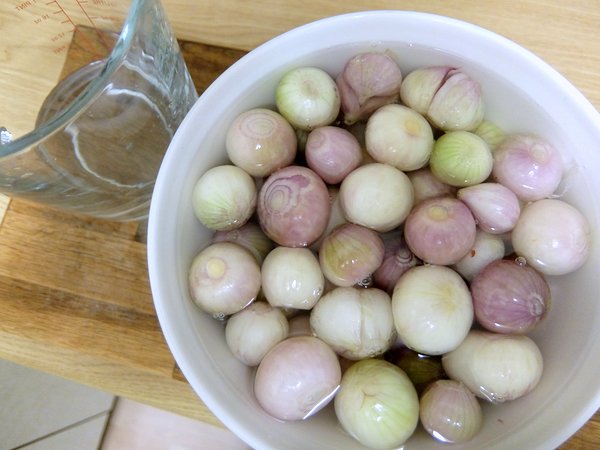
2. After at least 12 hours of soaking drain the shallots and rinse thoroughly in fresh cold water. You will want to rinse and change the water a few times to remove any excess salt.
3. Now we can prepare the pickling vinegar. In a pan heat gently heat the vinegar and dissolve in the sugar. Whilst the vinegar is heating add the pickling spice, bay leaves and chilli flake if you are using. I like to use a tea strainer so I can easily remove the spices later. If you don’t have one you can use a strainer.
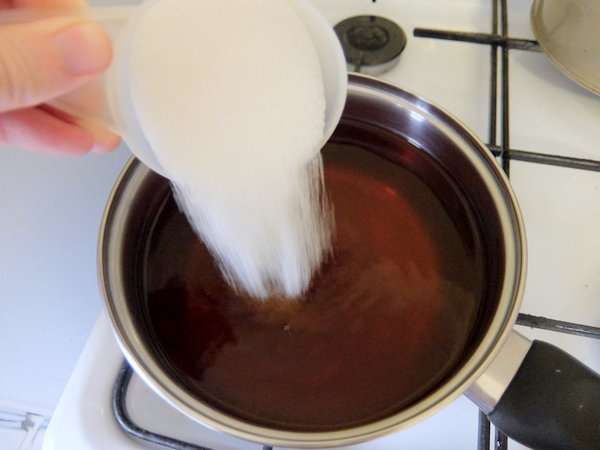
4. Bring the pickling vinegar to a boil for a few moments and then remove from the heat.
5. Place the shallots into sterilised jars that are still hot, I like to sterilise jars and their lids in the oven using this method. A jar funnel can help here as well.
5. Pour over the vinegar and completely cover the shallots with the vinegar. Seal the jar with the sterilised lid straight away. Once the jars cool a vacuum is formed completely sealing the jars in an airtight fashion.
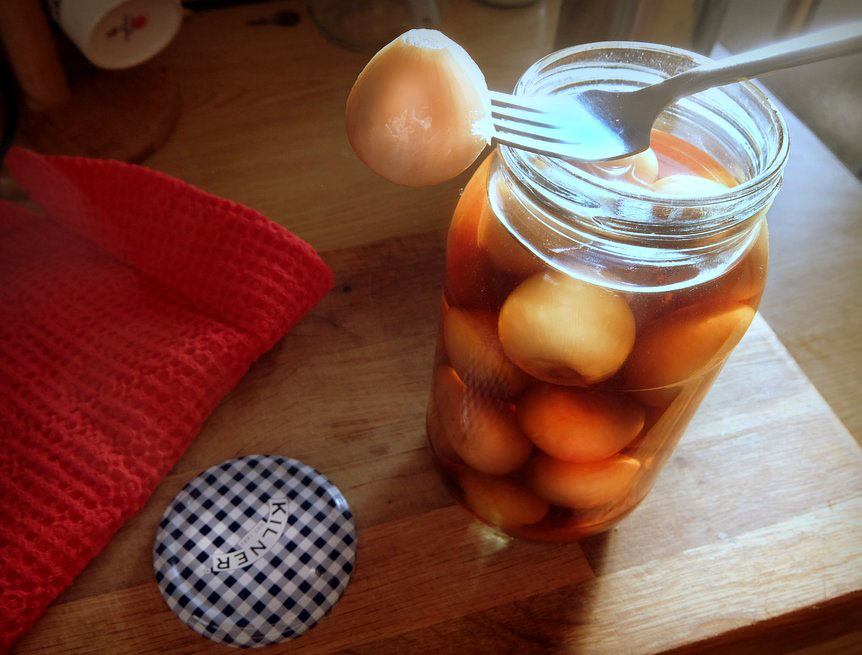
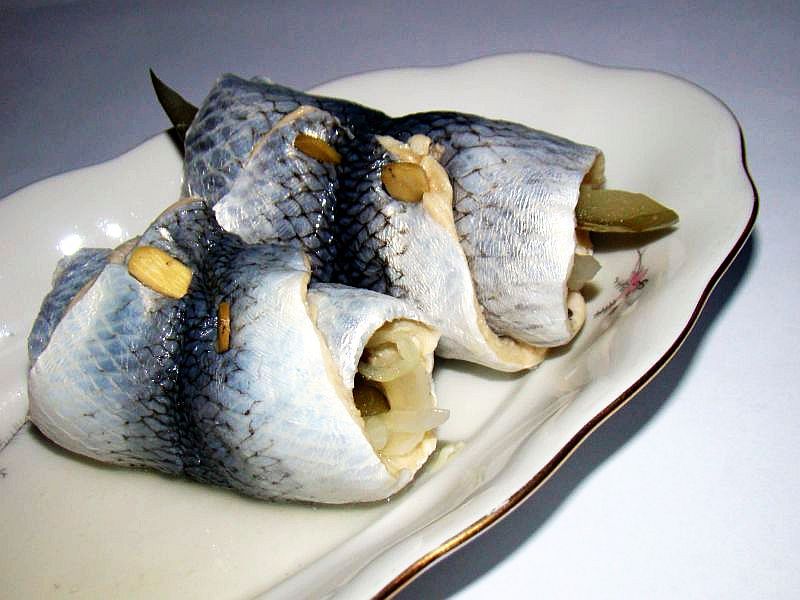
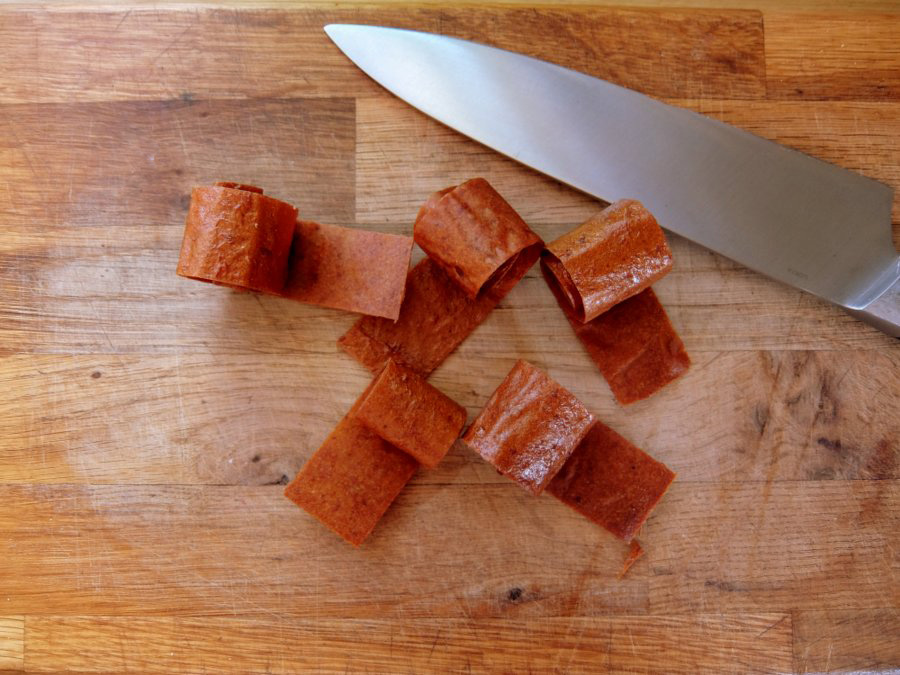
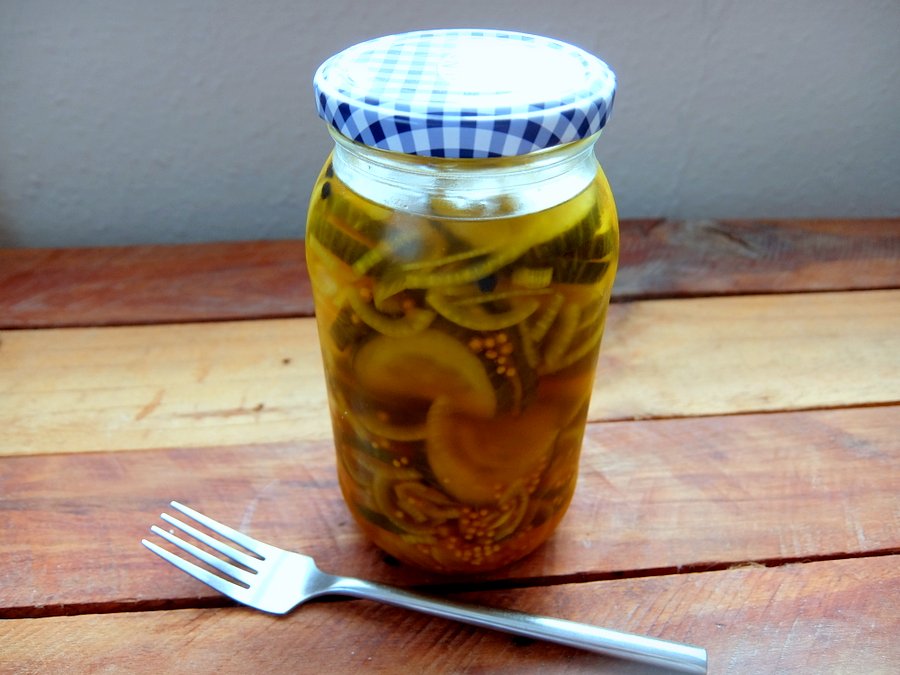
I love pickled shallots – thank you so much for sharing this recipe! It’s reinvigorated my need to start picking again. Its been so long!
I think you have made a typo with putting sugar instead of salt as the brine mix
You are absolutely correct. Have now corrected it, thank you!
We love pickled shallots and have just harvested a sizable bounty of them from our garden. I am looking for a method to store pickled shallots for up to one year – once the shallots are placed in sterilized jars and sealed, would one have to boil in a water bath? Wondering if so, would the boiling reduce the crunchy texture of the shallot?
Thanks
I make my pickled onions without processing in a water bath because they do have a tendency to lose texture after being heated. It is personal preference but I would say the longer you intend to store the jars the more reason you would have to process them in a water bath.
Most recipes I have seen for pickled onions/shallots don’t call for processing in a water bath.
Hope this helps.
I find using a little bit of pickle crisp/calcium chloride saves the crunch of most pickles along with a short 10-15 minute waterbath
I have heard this as well. I have also heard of using tannin in the form of oak leaves, horseradish leaves and so on will help pickles retain their crunch. I have not tried either myself admittedly.
My mom used to make these when she was around, and now that I’m older I wanted to find a recipe. SO happy I found this! I made this yesterday, two versions. One exactly as above, and one to be quick pickled in the ref.
Glad you like the recipe. Hope they turned out well!
Please can you tell me how long these shallots will last for, once sealed? Also how long would you wait before opening the jar?
I have kept mine for 6 months or so without any problem. The level of vinegar is high so they should last up to a year.
I have been pickling shallots for approx.8 years,since I helped my wife on her allotment.I have not always been successful with quality shallots but for the past 5 years the quality has been more than acceptable to not only myself but to my family,especially the grandsons.
My MO.has not changed and is as follows;- Dry the bulbs in the sun for as long as is possible to enable removal of the skins. Place peeled bulbs into a suitable bowl and cover with table salt. Leave for 12 – 15 hours. Drain off and then wash with cold water [might need to do this action twice]
In a spotlessly clean jar -Kilner or previously used but again sp.clean commercial jar put at least one heaped dessert spoonful of demerara sugar.Then place the peeled shallots in up to collar neck and and pour in Malt Pickling Vinegar [6% acidity] – The seal and leave for at least 5 weeks.
I hope that you have as much enjoyment from this recipe as I and my family have had.
I have not used the chili flakes at all but will certainly try them in this years batch..
How long should we wait before opening the jar?
Ultimately, it is up to you. I would wait at least a week or two if you can for the vinegar to penetrate the shallots and flavours to mellow.